Marijanes Diary #2 Cannabis Grow Journal
Index:
- Cannabis
- Parts of a cannabis plant
- Cannabis Flowers
- Leaves
- Grow Tips
- Seeds
- Trichomes
- Pre-Flowers
- Male or Female
- Methods to Determine Sex
- Stages of Growth
- Lighting
- Watering
- Pre-Flowering
- When to start Flowering
- Flowering Cannabis
- Quick Flowering
- Flowering Timeline
Related Posts
Don't forget to bookmark this page you might need to come back later :-)
Before we begin It is important for me to express the fact that I use marijuana medically and recreationally , However it is unfortunately illegal were I live and we are currently fighting legalization. When it comes to cannabis my passion only allows me to grow 100% organic medicine. It is probably worth mentioning I am not a writer, I simply aspire to write because steemit makes sharing my knowledge rewarding as well as worth my while. The information consisting of Marijane's Diary is the result of my own personal grow experiences and the use of online resources in public domains.
Marijane's Diary is intended as the first of ten posts I will be covering over the next few weeks. I plan on creating a complete reference and knowledge base about growing cannabis from start to finish as a online resource for Medical use as well as for educational purposes. You can follow me: @bitminter.
Please Note: The use of cannabis is illegal in some country's, please consult with a legal professional if you are uncertain of the laws and regulations of cannabis in your country.
Cannabis
Cannabis plants begin as tiny little sprouts and eventually, toward the end of their flowering cycle, they fill out into a Christmas tree-like shape. There are mainly three parts to a cannabis plant. The top cola, the mid-section, and the bottom lower branches. The top cola is where a the largest bud is grown and flowered. The mid- section contains some medium to average size bud, stems, and most of the leaves. Although the buds tend to be smaller than top cola buds the potency remains the same. The bottom part of a cannabis plant will contain large fan leaves and a small amount of bud.
There are many parts that make up a cannabis plant and the entire crop contains the psychoactive ingredients which include, Delta-9 THC and various other types of cannabinoids that give each plant its own unique characteristics, properties and effects. However, not all parts cannabis plant will contain the same concentrations of cannabinoids .
The flowers or Buds of the plant contain the highest concentrations of plant resin which in turn contains the highest concentration of psycho active ingredients. The UN-pollinated flowers of the female plants are used by recreational users because they produce copious amounts of plant resin. The plants do this because they desperately try to catch pollen from a male plant that might be in the area.
Cannabis is one of the few plants today that actually is split by gender with distinct separate male and female plants and seeds. Female plants do not generally pollinate themselves in the absence of males but do contain the genetic capability to produce male flowers and may actually pollinate themselves under stress. Males plants are generally not very potent and are weeded out!
When leaves are smoked they taste really bad and give you a headache rather than get you high. There are however ways to extract the active ingredients from leaves and the different types of leaves have different potency levels. Large Shade Leaves: These are the large classically shaped leaves on the plant and are the least potent. There are extraction methods that can be performed to get something useful out of these but the result won't be very pure and many growers just throw them away.
These clusters of small tender leaves are the point on the plant where new growth sprouts from during vegetation. They are more potent than shade leaves but less potent than trim leaves or bud.
The seeds generally contain only trace amounts of psychoactive ingredients but they are one of the most nutritious foods currently known to man. They are one of only a handful of substances that man can sustain off indefinitely with no other food and provide a complete amino acid profile.
Trichomes are the oil glands of the plant and contain the highest concentration of active ingredients of any part of the plant. The flowers are sought out because they contain the highest concentration of trichomes. Hash is made from collected and pressed trichomes. Trichomes are very useful for determining the maturity of a plant during the flowering stage.
Roots: Roots serve the plant through nutrient uptake. They have no psychoactive ingredients and aren't typically eaten.
Pre-flowers, as opposed to full developed flowers will generally appear after the fourth week of vegetative growth from seedling or clone. Pre-flowering typically lasts an average of 1-2 weeks. Pre-flowering is the stage in which your plant begins to fill out nicely and its sex becomes apparent. At the begging of your plant's growth you will not be able to say whether your plant is male or female. During the time of pre-flower time new growth regions begin to appear and change shape depending on your plant's sex. The plants features will then start to becomes obvious to the grower.
Pre-flowering begins when your plant's height stops growing. Also, looking closely at your plant reveals small new growths are beginning to form at the nodes between the stem and the branches. Check carefully above the fourth node. These small new growths will become leaves, branches and flowers!
Note: Pre-flowers are very small and and almost impossible to differentiate without magnification. A magnification lens is very handy when examining pre-flowers. Many times pre-flowers will appear at the fourth or fifth node once the plant is around 7th or 8th nodes in size. These pre-flowers usually don't develop into full flowers, but are only an indicator of the plants sex and will no longer develop.
Pre-flowering is the stage when hope for as many females as possible. It is early in this stage with a little experience you can make an accurate guess about your plant's sex. If you plan to move any male plants out of your garden, you will do it a week or two into this phase. A male plant will produce little balls that are clustered together(much like grapes). The male plant produces these pollen sacks that, when the time is just right, will burst and spread pollen to the female plants. A female plant produces little milky white pistils that look like hairs in a pod. These hairs(pistils) will begin to curl slightly and grow longer and thicker. These hairs are also very sticky, but do not touch them as they contain your much valued THC!
The hairs also will begin to cover in resin during the Flowering period(this is for catching the male's falling pollen). If the female is not pollinated then she will feel unloved and begin to produce and grow even MORE sticky THC-rich areas all over her flowers... hence the resulting development of a Sinsemilla crop, which means higher quality frosty incredible buds!
As we all know cannabis seeds grow into cannabis plants that are either male or female, but how can you actually tell?
Males can be identified by looking at the inter-nodes at the point where the leaf and branch stem connect to the main stalk. Males are often tall with stout stems, sporadic branching, fewer leaves and are know to have a very strong pungent smell. When a male starts flower development, the tips of the branches will develop and start to grow what looks like a little bud(little balls) with no white hairs coming out of it.
Male flowers size are anywhere from the size of as marijuana seed and can get as big as popcorn seed. Males should be removed and destroyed to prevent them from releasing pollen into your garden. The pollen transfers easily so the males can not be grown anywhere that shares an a/c or ventilation system unless special filtration precautions are taken beforehand.
The male pre-flower may be described as a "ball on a stick." However, its most recognizable feature is its absence of pistils. Sometimes, a male plant will develop mature staminate flowers after prolonged periods of vegetative growth. These appear in clusters around the nodes.
The male plant will have balls of pollen that in nature produce pollen that transfer & pollinates the receptive hairs of the female plants, which once pollinated will produce hundreds of seeds. If the female plant isn't pollinated(by keeping the male plants away), she becomes very annoyed and will begin to continuously produce thousands and thousands of hairs in the hope to catch some male pollen. The flowers will continue to grow, develop in size, and produce lots of rich THC resin.
Note: Female cannabis plants that are pollinated will use vital energy for producing seeds instead of THC and bigger buds. This results in lower quality and potency marijuana. Male plants in general will have little to no potency because they produce far less THC than a female plant.
Female plants produce tear-drop shaped balls called “calyxes” at the nodes between the leaf and stem. Each sprouting two white hairs or, “pistils.” Another identifier is that the female plant's leaves will grow closer together forming a strong stem which will hold the clusters of flowers and later the ripening seeds. Females should have no balls and will have small white hairs.
The female pre-flower is basically pear shaped and produces two white pistils. Female pre-flowers do not show pistils until well after the pre-flowers have emerged. Pistillate or pre-flowers are located at the node between the stipule and emerging branch. Female preflowers never produce pistils. A female pre-flower without pistils is difficult to distinguish from a male pre-flower. Thus, hermaphodite issues should not be resolved by the appearance of pre-flowers, without pistils, on a plant otherwise believed to be a female.
A hermaphrodite, or “hermie”, is a plant of one sex that develops the sexual organs of the other sex. Most commonly, a flowering female plant will develop staminate flowers first, though the reverse is also true. Primarily male hermaphrodites are not as well recognized because few growers let their males reach a point of flowering where the pistillate would be expressed.
Hermaphrodites are generally viewed with disfavor. First, they will release pollen and ruin a sinsemellia crop, pollinating themselves and all of the other females in the room. Second, the resulting seeds are worthless, because hermaphrodite parents tend to pass on the genetic tendency to their offspring.
Note: Occasionally specious staminate flowers will appear in the last days of flowering of a female plant. These do not drop pollen and their appearance is not considered evidence of hermaphroditism.
If your plant has not shown any pre-flowers but you want to be really sure what sex they are, you will have to wait for the real flowers to mature. Indica tends to flower earlier then Sativa dominant strains. By looking at the flowers and identifying males or females you find out the sex of the plant. Remember if the plant has both males and females flowers it’s a dreaded hermaphrodite.
It is possible to induce flowering in plants with a 12/12 light cycle, identify the males, then to re-veg by going to 24 hr light. The males will show their sex within 2 weeks of 12/12. They will then revert to vegetating after a couple weeks of 24 hrs. However forcing vegetative phase can cause unnecessary stress and stretch or hermies. Therefore it better to force flowering on clones. Since we are only interested in the sex and not in the yield of the clone any type of lamp will do the job. Also if you are flowering clones just to figure out the sex, you do not have to root the clone, you can just let it stay in a glass of water.
If you are flowering clones just to find out the sex you can increase the period of darkness. This will speed up the flowering process dramatically – however it will also decrease the yield so it’s not a method to use if you’re seriously interested in growing for a big yield.
Useful Tips Your Plant Height + Your Pre-Flower Timing: Only If you are using the same strains, it can be a safe assumption that the taller plants are males and the shorter plants are females. Also note that male plants tend to begin pre-flowering much earlier than female plants.
Another method is to take a magnifying glass or microscope to the plant's calyx. If the calyx is raised on a stem then it is most likely a male plant. If the calyx is NOT raised on a stem then it is probably a female plant.
Forcing Clones:
This method is a 100% accurate way of determining your plant's sex. Begin by taking a cutting(two is best, just in case one dies), from each parent plant whose sex is unknown. It is advisable to somehow place a label or piece of colored tape on the cuttings to identify sets of clones from their corresponding parents. Next give your rooting clones a 12-hour light/dark photoperiod. After a 12-hour day, place the clones in a completely dark area (such as placing a box over them). This will induce flowering. Clones typically tend to show their sex within two weeks.
Paper Bag Method:
This is an easy one. To do this, take a black paper bag and insert another two inside it to make 100% sure it's light proof! Secure the bag over the branch and tie it to the base of the step using twist ties. Apply the bag so that the branch receives 12 hours of light and 12 hours of darkness(i.e. on at 6 P.M. off at 6 A.M.). Within two - three weeks you should see the male plants will have the little balls. The females will have two tiny white hairs emerging from an immature calyx. The males can now be quickly removed and you are guaranteed a crop of all females. Remove the bag from the branch and she will begin vegging again.
Cull out all the males(unless you are using them for breeding purposes). Keep the mother growing in vegetative mode under 18-24 hours of light.
As with most plants in nature, cannabis goes through several distinct phases of growth. It is a annual plant that completes its life cycle from start to finish in one full season. A seed that germinates in the spring will grow vigorously through the summer and flower in the fall when light cycles get shorter, producing more seeds and repeating the cycle. The three basic stages of development are Seedling(also called “germination” or “pre-vegetative”), Vegetative, and lastly Flowering(or “budding”).
Germination
During germination, moisture, heat, and air activate hormones within the durable outer coating of the seeds. Soon, the seeds outer protective coating will crack and split open showing the root(a tiny white sprout) is pushed downward into the grow medium. Next a sprout will appear and seed leaves emerge out from within the shell as they search upward for light. Soon after a developing seedling is formed.
Seedling Phase
After roughly 3-8 days of germination, your plants will enter into their seedling phase of growth. First a seed that has been germinated and sprouted a root is placed in the hydroponic garden(or soil container) and given food (nutrients) and light. The plant will form its' root system first, then put more energy into the stem and a couple of new leaves. Typically during this seedling phase plants are given 16-18 hours of light each day to ensure strong healthy growth. The seedling stage lasts for about two to three weeks.
Vegetative Growth
Once a cannabis plant has established a strong root system the foliage growth increases rapidly, your plants enter what is known as the vegetative growth phase. This begins the moment a seedling or clone takes root and ends as soon as the plant is ready to mature and produce buds. During this phase of growth your plant will begin to quickly develop and begin growing thick branches, stems, and start producing leaves. As long as plenty of sufficient light, nutrients, CO2, water and other optimal environmental conditions are met you can expect your plant to grow from ½ – 2 inches per day! This is also the stage in which the plant's root system strengthens and matures. The stem also grows thicker. It's cool to see your plant begin to look like a real marijuana plant! This is the stage where this happens. Effects you will observe is a thicker stem & branches, and more fingers forming on the leaves.
A key biological process known as Photosynthesis will begin to occur during the Vegetative Growth Phase. This begins once the second set of leaves has grow and has expand. Chlorophyll converts CO2 from the air, light energy, and water into carbohydrate food and oxygen. In order for this process to occur, leaves must be kept hydrated. Stomata (tiny breathing pores located on the underside of the cannabis leaf) open and close constantly to regulate moisture preventing dehydration. The stomata allows waste and water to flow outwards. Always remeber to keep your plant's stomata clean! This means no dust or nasty buildup, your plant's need to breath in order to maximize photosynthesis and other critical growth enhancing processes.
During vegetative growth the plant will be photosynthesizing as much as it can to grow tall and start many new grow tips. A grow tip is the part that can be cloned or propagated asexually. They are located at the top of the plant, and at ever major inter-node. If you “top” the plant, then it has two grow tips at the top. If you top each of these, you will have 4 grow tips at the top of the plant(since it takes time for the plant to heal and recover from the trauma of being pruned, it is faster to grow 4 smaller plants and not top them at all. Or grow 2 plants, and “train” them to fill the same space). The key to a strong vigorous vegetative growth phase that will reap a heavy, sparkling rich harvest is to supply the roots and plants with the perfect flourishing growth supportive environment. The adult life cycle of the marijuana plant consists of two stages of growth, Vegetative and Flowering.
The plant determines which of these stages of growth it should be in through the presence of a flowering hormone which is sensitive to light. As long as light levels above 12-14hrs are maintained the flowering hormone will never be present in high enough levels to induce flowering in the plant. At any point during the plants life if the light is on for more than 12hrs a day it will cause the levels of flowering hormone to be reduced and the plant to revert to the vegetative growth stage. If a plant is reverted during flowering by irregular light patterns it can cause stress in the plant and stress can cause hermaphroditism.
Plants can stay in the vegetative stage indefinitely with no adverse effects. In other words, you have full control of how tall they will grow. As long as the photo period of 16 hours or more light is maintained, marijuana plants will remain in vegetative growth theoretically forever – it us up to the grower to decide when to force the plant to flower. A plant can grow from 12” to 12 feet before being forced to flower. The hydroponic growth phase usually lasts 4 to 8 weeks.
In this vegetative growth stage the plants will receive light 18 to 24 hours per day. In this stage your plant will need as much light as it can get, leave your light on for 16-24 hours and enjoy watching your beautiful cannabis plant grow fast and vigorously! During this stage you are going to want to start with your light about 20 inches or more above the top of your plant, and then each day lower the light about an inch or more until you feel the height is just right.
WARNING: If the light is too low it will dry out the plants and turn them brown. If the light is too high the plants will grow too tall because they stretch trying to get closer to their light source.
Keep lights on continuously for your vegetating sprouts, since they require no darkness period like older plants. You will not need a timer unless you want to keep the lamps off during a certain time each day. It is possible to grow plants with no dark period, and increase the speed at which they grow by 30%. Try to light the plants for 18 or more hours, or continuously at this point. As long as the plants receive 16-24 hours of light, they will remain indefinitely in this vegetative stage.
One heavily debated issue among growers is whether the dark period is needed during vegetative growth. There are various mythical claims that a darkness period is needed but there is absolutely no strong evidence to support this. Experienced weed growers agree - extremely healthy and potent marijuana is grown under 24hr vegetative light. What is in dispute is whether the extra light hours bring a great deal of benefit compared with 18hr light.
Also, you can start off your vegetative stage with a fluorescent light. The reason you would want to do this is to not give the plants excessive light at the beginning of the growing process. Allow them to build up to it as they would in nature where the seeds would germinate in spring when the sun is not as strong as it will be in summer.
Watering properly is also a key element during vegetative growth to ensure a healthy grow and a bountiful harvest. As the plant gets bigger, so does its root system. This means the soil/grow medium will dry out faster as more water is being used up. Pay close attention to your plants and keep them hydrated!
In this stage water and nutrients will be used more quickly. Including high levels of nitrogen. Also potassium, phosphorus, sulfur, magnesium, calcium, and other trace elements are needed as they are used at much faster rates.
During vegetative growth you will want to use a fertilizer that is high in nitrogen at full strength. Nitrogen is used by the plant to grow stems, leaves, and other green parts and so is absolutely essential during the vegetative phase of growth. As always you should begin with the manufacturers suggestions for the period of growth you are in when adding fertilizer and then adjust up or down based on how your plants respond.
This is the stage where it is common for newer growers to add too many nutrients or screw up their plant's pH levels. Always carefully check your pH before adjusting nutrients to correct a problem. At this time, a solution of 20-20-20 with trace minerals is used for both hydroponic and soil gardening when growing continuously under lights. Miracle-Grow, Patio or Rapid-Grow plant food is ideal for this. Epsom salts(1tsp) should be used in the solution for magnesium and sulfur minerals.
Trace minerals are needed also, that is, if your food does not include them. Miracle Grow Patio includes these trace elements, and is recommended if it is available in your area. Any fertilizer with the proper ratio will be fine during vegetative growth.
As you recall, the plant's sex becomes apparent during pre-flowering. The sex of the plant also becomes very apparent. The goal of many modern growers is to select strong, healthy potent female plants as mothers. These mother plants are given a continuous 18-24 hours of light so that they are forced to stay in the vegetative growth stage. Growers then cut branch tips and root them, these cuttings are known as “clones”. Selecting a strong healthy “Bonsai Mother” plant is the key for having access to a constant fresh supply of all-female genetically uniform clones. (More about clones later)
Once you are in the Pre-Flowering stage you have a very critical decision to make. Do you want to start Flowering now, or continue Vegetative Growth? Consider this before you make your decision; the amount of bud your plants will produce is not equal to your plant's height. Your plant's maximum bud production is caused by the following main factors:
- A) Your plant's growing environment.
- B) The number of nodes your plant has.
- C) Your strain's genetic threshold for bud production.
The quality of the buds is not time dependent, nor is it a factor of the size of the plant. Buds maturing on two clones from the same plant, one newly rooted and the other a large plant growing vegetatively for three months, will produce equal quality buds. Ultimately, the decision is yours. Figure out how big you want the plant to be when it's ripe. The smaller the plant is when it is forced to flower, the smaller the bud will be at ripening.
It's totally possible to get more bud with a lot of plants which are flowered as soon as they are mature. This also helps keep the plants shorter and smaller. This can be done rather than extending vegetative growth with the smaller plants until they reach their maximum height and size. The time frame for the smaller plant option may also produce more bud turnover per annum.
Now that you understand this, you can choose to either flower now or choose to keep your plant growing until it reaches it's maximum size threshold before you decide to start Flowering. Your plant will need to have reached a level of maturity where it is producing alternating nodes. If grown from seed this will usually occur a few weeks into vegetative growth.
You can begin flowering when your plants have reached a minimum of 6 inches in height, AND have at least 4 sets of leaves. Depending on certain factors, this typically takes around 2 weeks to a month of vegetative growth in most hydroponic gardens. Clones taken from a mature plant will be sexually mature upon rooting and can be flowered immediately.
Note: If you decide to flower now, make sure you have plenty of room for your plant because during Flowering most Sativa-dominant strains DOUBLE in both height and width! During the flowering stage a plant may grow between 2 and 2 ½ times the size it achieved in vegetation. Plan accordingly.
Flowering is the most exciting stage of growing marijuana. This is the phase of growth that produces the most THC (the active ingredient that produces the high) Once Flowering begins, your plants height will slow drastically, do not be alarmed as this is completely normal. The reason this happens is because the plants are beginning to use their energy for the flowering itself. Nearly all the THC is produced during the flowering stage. Indica dominant strains will flower faster than Sativa varieties.
For the next two to four weeks after Flowering has started the height of the plant should continue to increase, after that all the plants energy will then be used for flower production.
The final stage of Flowering is also known as“budding”. This is the most exciting stage in which the plant fills out even more and the flowers continue to grow. Plants cease to develop any additional shoots or growth, and overall size will slow. They will now begin redirect their overall energy for bud production. An ideal female will grow short, squat, and bushy with branches close on their stem with dense foliage and buds.
Eventually the female plant reaches a peak period of Flowering. At this time your plant will begin to fill out more with more leaves, branches and flowers, as well as begin to take on the shape of a Christmas tree. During this peak period the female pistils(hairs) tips will swell up, as well as begin to change color. In most cases (and this is touched on later) they will change from a white tint to an orange tint to a red tint to a brown tint. All strains are different but this is what will generally tend to be the case. If you have access to the breeder's recommended flowering times then all the better. Once the plant does this you are ready to harvest her and sample your tasty new herb.
Keep in mind each strain has it's own specific flowering time and each strain may have a different color tint when they reach their flowering peak. A great time to begin flowering(by initiating the 12/12 light cycle) is when your plant reaches half the size you want it to be. Keep pruning to a minimum during the entire Flowering phase.
Flowering plants should not be sprayed often as this will promote mold and rot. Keep humidity levels down indoors when flowering, as this is the most delicate and important time for your plants.
Flowering plants need very high P(Phosphorus) level foods, such as 5-50-17, but 10-20-10 will suffice. Nutrients should be provided with each watering when first flowering. Also, fertilizing should be minimized or cut down to 1/4 strength. Marijuana uses large amounts of phosphorus during flowering so 5-50-17 should be used at 1/4 strength.
Trace elements are essential too. Try to find foods that include these, so you don’t have to use a separate trace element food. Many nurseries sell trace element solutions rich in iron for lawn deficiencies, and these can be adapted for use in cultivating the sweet green herb. Prices for these mass produced fertilizers are significantly cheaper than the specialized hydroponic fertilizers sold in indoor gardening shops, and seem to work equally as well.
Some growers believe that it is important to begin using flowering nutrients 1-2 weeks before switching over the light for flowering(12/12 photoperiod). Others begin flowering nutrients when as soon as they switch the light.
Don't spray with bug spray during flowering or you will taste it in the smoke. Another important thing to look for during flowering is yellowing leaves. Particularly towards the end of flowering plants will begin robbing nutrients from their leaves. This is perfectly normal and nothing to be alarmed about. You do not need to make an effort to remove the leaves unless they are brown and dead.
In nature sooner or later the marijuana plants will enter Flowering once the days become shorter. This happens outdoors in nature in the wild in the fall. This signals to the plants that their annual life cycle is coming to an end. At this stage the flowers of the female plants would normally become pollinated by a male plant, but if left un-pollinated the females will become annoyed and grow rich amounts of cannabinoids such as THC, without seeds(if a female plant is fertilized with male pollen, it will grow a seed). Without seeds, all the plant's energy and resources are used to make big resinous buds. This is called a Sinsemilla crop. When growing indoors we must force this to happen by giving our plants 12 hours of uninterrupted total darkness.
So once you decide to begin Flowering(you should be excited!) it is time to put your plants on a 12 hours on and 12 hours off per 24 hour period lighting schedule. The actual time varies from plant to plant but a guideline is 12 hours light and 12 hours dark. The theory behind 12/12 lighting timing is simple. In nature, cannabis plants in the wild begin flowering in the later Fall/early Winter months. During this time the days(daylight) gets shorter and the nights(total darkness) gets longer. As you guessed, the plants are under 12 hours of light and 12 hours of darkness.
Note: The above lighting figure is for most commercial varieties of cannabis. Plants that develop in tropical climates often start flowering under more light and less darkness.
When this specific lighting combination occurs the plants will undergo a internal chemical process that naturally stimulates them to flower. As long as the 12/12 light cycle continues, the plant will grow big and produce an abundance of frosty flowers. As a grower this is your intention, to produce as many THC rich bud flowers as possible. In order to accomplish this you must follow the 12/12 lighting cycle – 12 hours light on, 12 hours light off(complete darkness).
Start this lighting cycle during Pre-Flowering to stimulate your plant to begin Flowering. But make sure you only switch to a 12/12 lighting cycle when pre- flower signals are shown. If you do this too early, your plant may encounter sex- related stress problems and become a Hermaphrodite! Not cool. What early “forcing flowering” before they are ready does is create a condition called “self- pollination” where the plant thinks it's chances of reproduction are slim to none. It will produce both male and female flowers on the same plant. The male flowers then pollinate the female flowers which will eventually produce seeds.
The plant can be shocked into thinking it missed it's time to receive pollen, so the above process gets triggered as a last ditch effort to receive pollen. (During the natural growth cycle male plants release their pollen around the time female plants begin to flower).
Having pollen floating around in your grow room from a hermaphrodite plant will also spoil your other plants(and breeding projects!) So only go to a 12/12 light cycle when your plant is properly Pre-Flowering.
Additionally, 13 hours light, 11 dark may increase flower size while still allowing the plant to go into the flowering mode. Use longer dark periods to speed maturity toward the end of the flowering cycle if speed is of the essence. (8-10 days) but be warned as his will reduce total yield.
Complete Darkness
When light within a certain spectrum hits the surface of the plants chlorophyll receptors, it prompts a hormone called florigen to be produced. Another hormone named antiflorigen is also produced at this time by flowering plants. The ratio between these two hormones is what causes a plant to flower or not. In the plants leaves, another chemical exists named phytochrome that is necessary to react with florigen to produce flowers. When the phytochrome within the leaves of a plant receive a duration of light that would be considered "short day light" by that exact plant, then the antiflorigen is repressed and the florigen is increased, thus causing the plant to start flowering.
If the duration of light of correct spectrum and intensity is interrupted from a "short day", anywhere within the "dark cycle", it causes the plant to again start producing antiflorigen. The ratio between the florigen and antiflorigen is altered and flowering will decrease or stop.
This switch between ratios of florigen and antiflorigen is stressful to the plant and can cause a sexual reversal from female to male or male to female, and greatly stunt growth. Hermaphrodites form in response to this florigen/antiflorigen ratio alteration. If you take all of this information and relate it to each of your plants, you'll see that in regards to light interrupting a darkness cycle, many factors come into play. Brief interruptions of low intensity may not be sufficient to cause the florigen/antiflorigen ratio to change enough to change the plants flowering in any visible way. It can however, cause a slowing of flower growth.
Be careful if you visit your garden at night. Any light, even that from a weak flashlight will disrupt the hormone that induces flowering and the plants will revert back to vegetative growth. If you must visit at night don't use any light, or better, visit during the day.
Note: A green light can be used to work on the garden during the dark period with no negative reactions from the plants. These are sold as nursery safety lights, but any green bulb should be OK. It is best to keep the dark hours a time when you would normally not wish to visit the garden. I'd still be a bit wary though. The best way to not affect this ratio of florigen/antiflorigen is to leave the flowering room completely dark for the entire darkness cycle. This makes it foolproof. During the 12 off cycle, make sure the plants are kept in complete darkness.
Any light of sufficient strength to be "seen" by the phytochrome receptors in the leaf will have an effect on the flowering. So go in there at night and make sure no light is visible. A desk light across the room will result in continued vegetative growth and will stop your plants from flowering properly. Even small LEDs can upset this process. Your grow area must be completely sealed so that is is light-proof. One effective way to do this is use thick black screening(used in photography dark rooms found in most hardware or fabric stores), a thick black cloth, or even a black opaque plastic can be used sealing up all light-entry points. Go in there at night and make sure your plants are in COMPLETE and TOTAL darkness.
You can make the plants mature in 36 days if you are in a hurry. This can be done by cutting back on the light to about 14 hours, but the plants will not be as big. You should gradually shorten the light cycle until you reach 14 hours. You can force the plant to flower quicker by maximizing the length of the dark period. Try 18 hours of darkness and 6 hours of light. Lower temperature during the dark period, preferably under 59°F(15°C). The harvest will however be lower and with reduced quality. Apply ethylene will quicken the ripening even further.
Seeds and flowering
Flowering is the stage in which the female plant will produce seeds if she has received viable pollen from a male plant. The seeds grow within the female bud and can take anywhere between 2 weeks to 16 weeks, to grow to full maturity. The female pistils may change color before finally bursting the seedpods, sending them to the soil below. (Breeders like to collect their seed before the seedpods burst.)
Female marijuana goes through several stages once it begins flowering. First a few flowers will appear. Then new flowers develop around the first ones. Flowers also form at each leaf node along the branches and main stem, the bud then begins to fill out so that the cluster becomes thick with pistils reaching out for pollen. They will look fresh and moist. Just as soon as it looks like it is finished, a new wave of flower growth appears, usually in a relatively bare spot. New flowers may appear for weeks! Next the flowers close and the calyxes start to swell; this is a false seed pod because the flowers have not been fertilized. These pods will be totally covered with resin glands. At maturity the glands will be sparkly with resin in bright light. The individual glands will appear clear under magnification. As a rule plants require about 8-12 weeks of flowering to produce ripe buds.
It should be noted that this is just a general average guideline. There are wide variations from this, some strains will move faster and other much more slowly. In some cases that wait is worthwhile and in others it is not: 1-2 Weeks - During this time your plants will be changing over to their flowering period. It is generally during this time that the first evidence of flowers will appear. 2-4 Weeks - During this time the plants will begin to stretch for the light.
Flowers will appear at all the nodes but they will be light and airy no matter what you have done. 5+ Weeks - During this period you will likely see lots of yellowing on leaves and if you have done everything else right you will see the buds fill in and thicken substantially. Last 2 Weeks - During the last 1-2 weeks of your plants life you will want to water it with clean water and feed it no nutrients. Before The Last 72hrs - Here you will want to flush the grow medium thoroughly.
During The Last 24-48hrs - You should shut off the lights (THC is light sensitive and the plants will be utilizing sugars already produced by photosynthesis during this period). Overall this will increase taste and potency by flushing the plant of fertilizers and sugars which simply don't taste good when burned. Depending on the type of seed, the flowering cycle will usually last you approximately 2 months, sometimes longer. So the total average length of time from germinating to harvest will be around ~3 months.
Note: This can be shortened even less by using two growing areas, one for the first stages of life and another strictly for flowering. At the end of flowering, marijuana plants are harvested then set to air dry.
My Related Posts
- DIY Grow Fridge Tutorial
- The Art Of Potsai, An illustrated guide to growing miniature marijuana plants
Please be sure to follow me @bitminter for Marijanes's Diary #3 Lighting, The Lighting System, Light Sources, High Intensity Discharge(HID) Lighting, Lighting Your Plants,Lighting Schedule.
Piece

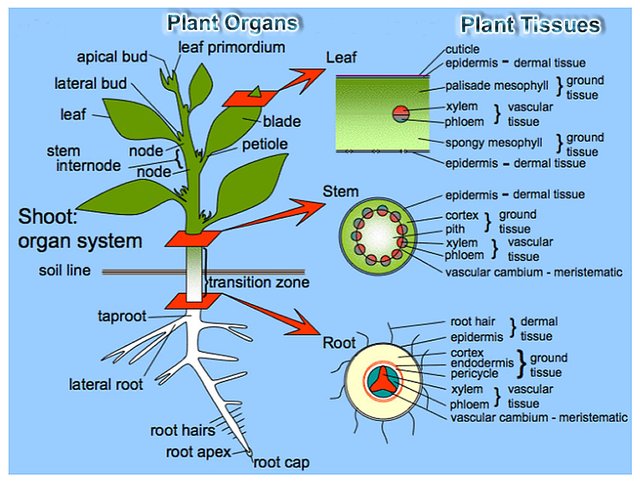
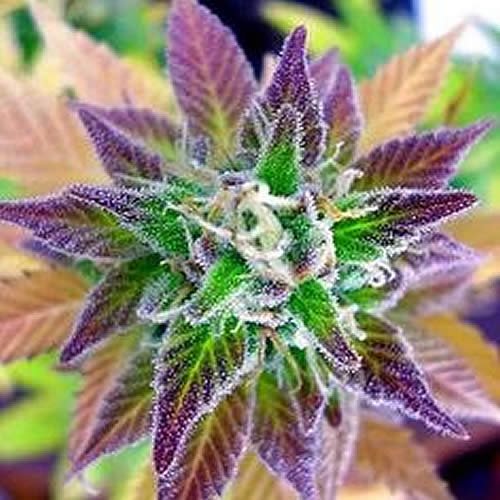
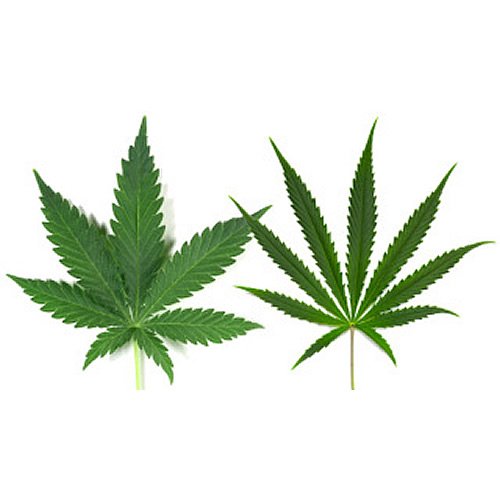
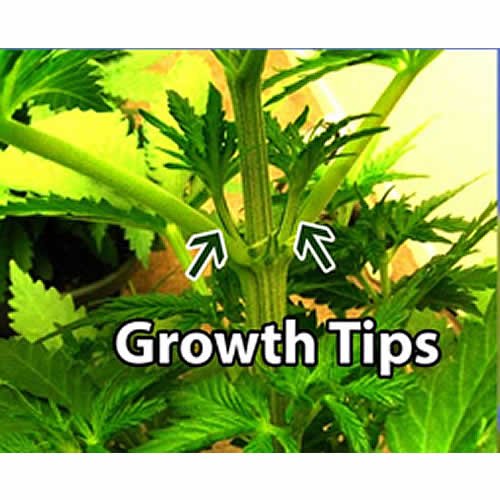
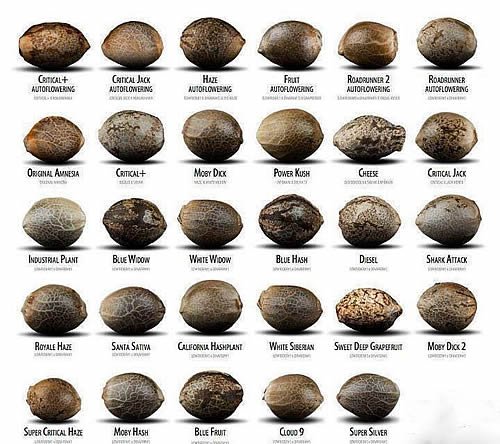
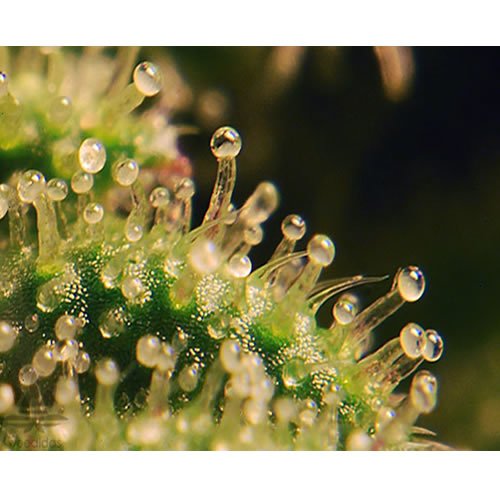
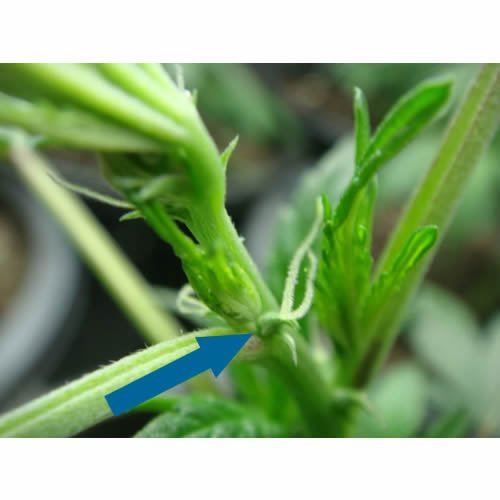
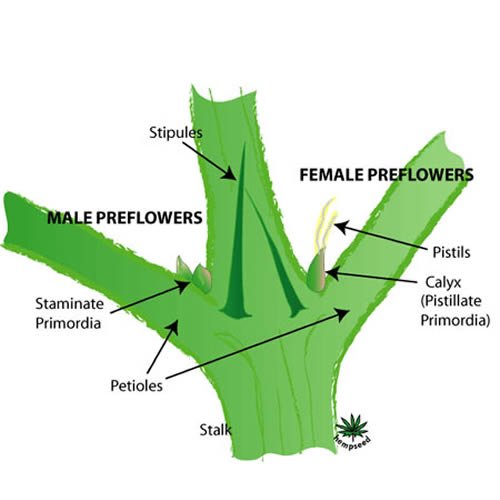
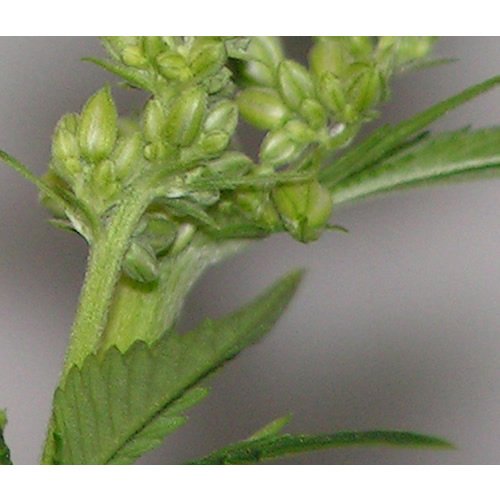
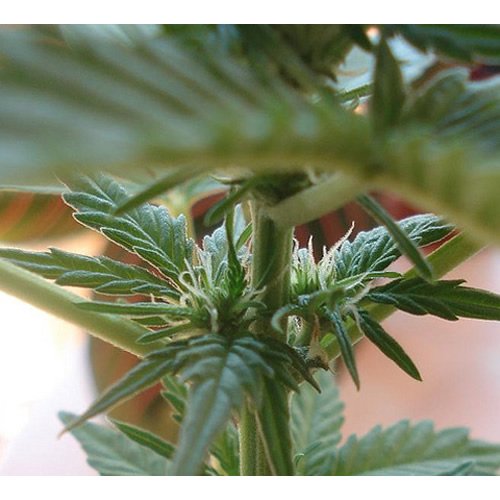
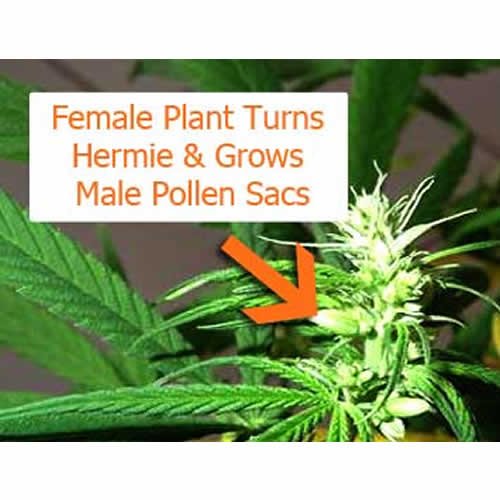
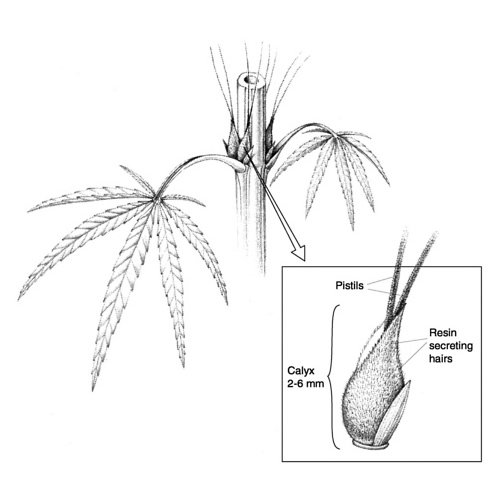
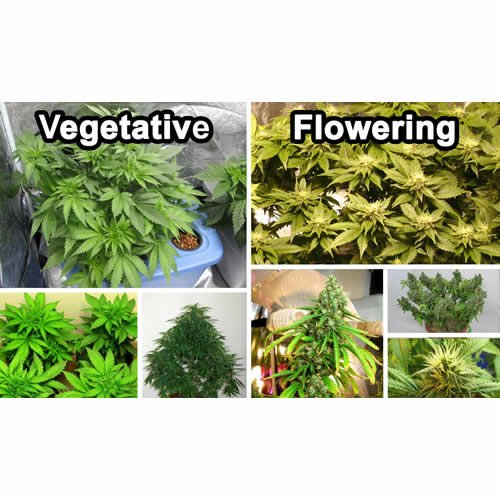
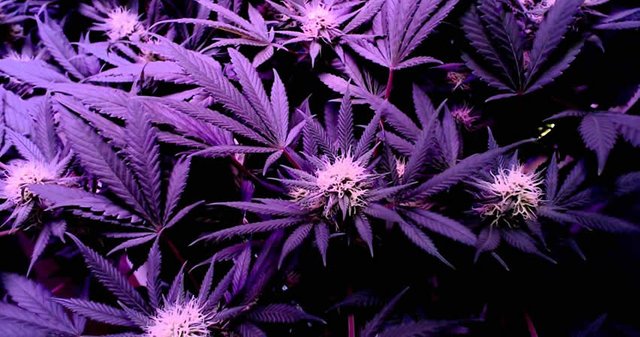
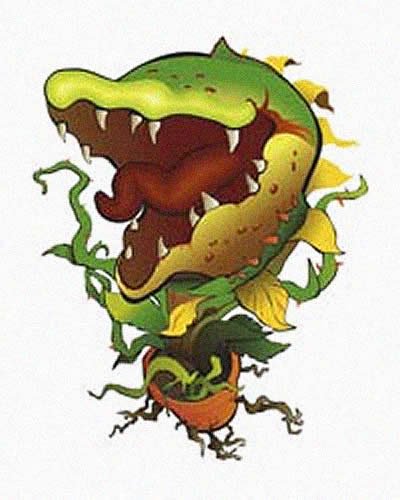
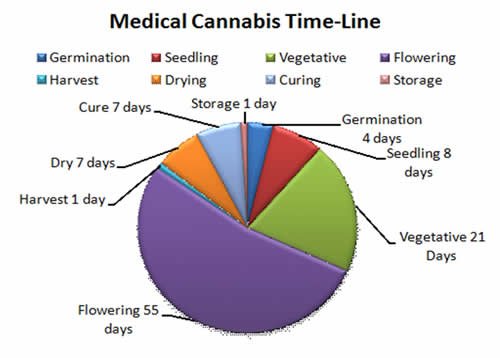
Any questions or comments are welcome, Thanks